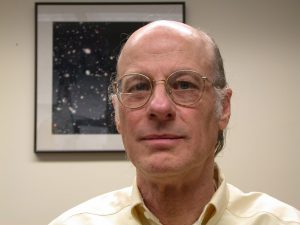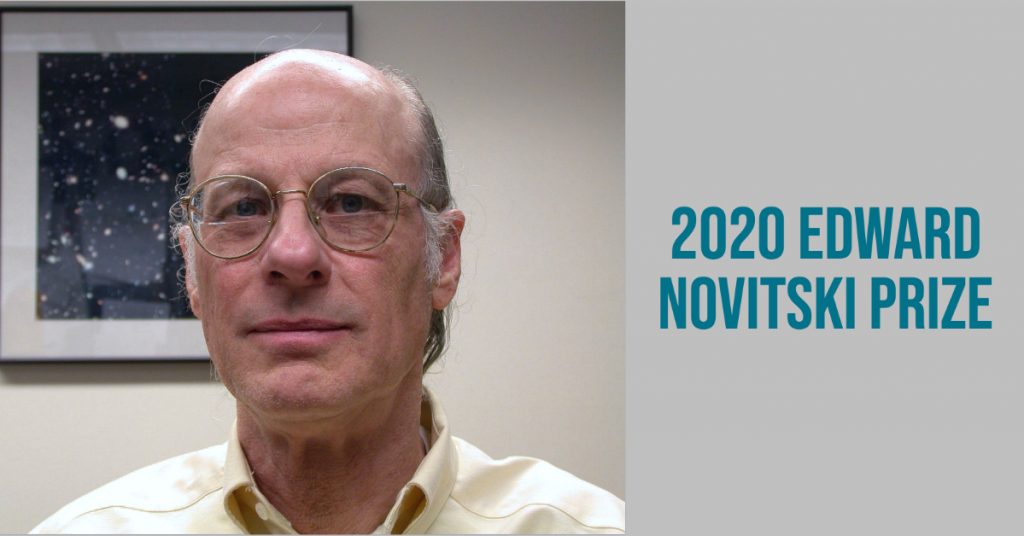 Today it’s easy to take for granted that geneticists can identify a mutation, find its gene, and map it to the expressed protein. But just a few decades ago, this problem remained a thorny one. Welcome Bender of Harvard Medical School—with his work teasing out the function of the bithorax complex in Drosophila—made key advances in this area. For the development of positional cloning approaches and his creative, in-depth exploration of the function of the bithorax complex, Bender has received the Genetics Society of America’s 2020 Edward Novitski Prize for extraordinary creativity and intellectual ingenuity in solving significant problems in genetics research.
Today it’s easy to take for granted that geneticists can identify a mutation, find its gene, and map it to the expressed protein. But just a few decades ago, this problem remained a thorny one. Welcome Bender of Harvard Medical School—with his work teasing out the function of the bithorax complex in Drosophila—made key advances in this area. For the development of positional cloning approaches and his creative, in-depth exploration of the function of the bithorax complex, Bender has received the Genetics Society of America’s 2020 Edward Novitski Prize for extraordinary creativity and intellectual ingenuity in solving significant problems in genetics research.
“Welcome Bender opened up the fields of developmental and disease genetics for years to come,” says Mark Peifer of the University of North Carolina, Bender’s former graduate student and one of the scientists who nominated him for the award. “Working in Dave Hogness’s lab, where molecular biology was first applied to Drosophila, Welcome invented a simple but conceptually ingenious idea for positional cloning: Look for a clone in the rough region of the genome and use this as a toehold. Then isolate a larger genomic region overlapping this original clone and use the most distal sequences in that region to iteratively repeat the process.”
Bender’s interest in Drosophila genetics started during his final year as a Harvard undergraduate, which he spent at the MRC Laboratory, working down the hall from Francis Crick and Sydney Brenner. At the time, Crick was excited about fruit flies and the notion of one-band, one-gene, Bender recalls. “When I then began graduate work, I, I imagined that I was going to figure out how to do a transformation into fruit flies.” That idea crashed and burned, he notes. “I was ahead of my time in ideas and behind my time in capabilities.”
Bender completed his PhD at Caltech with Norman Davidson while focusing on RNA tumor viruses, but his interest in Drosophila genetics continued. For his postdoc, he chose to work on recombinant DNA in fruit flies with David Hogness at Stanford. At the time, he says, the biggest challenge was getting access to interesting genes with a history, such as the rosy locus studied by Art Chovnick or the bithorax complex studied by Ed Lewis.
When he started working on positional cloning in the Hogness lab, Bender thought he could divide the Drosophila genome into restriction fragments and separate them with 2-D gel electrophoresis, comparing wild-type fly strains with those that had deletions in an interesting region. “It was a disaster,” Bender says. “At the time we didn’t appreciate that there were so many mobile elements in flies and that every strain had a distinct collection of them.” Plan B involved “walking” along a chromosome with overlapping recombinant clones. (It was a close collaboration with Pierre Spierer, another postdoc.) The walk quickly bumped into a mobile element, which had also inserted into many other places in the genome. This repeat blocked the recovery of a unique overlap. That’s where using different genetic libraries from distinct Drosophila strains—one developed by Elliot Meyerowitz in the Hogness lab and another developed by Joyce Lauer in the Maniatis lab—proved fruitful. The mobile element blockage in one library was absent in the other. Bender also harnessed his knowledge of electron microscopy with nucleic acids, a technique he’d learned in Davidson’s lab. Because they could use heteroduplexing to follow overlaps between two clones, they could unravel tricky genetic problems, including a rearrangement within the bithorax complex that would have been difficult to identify by other methods.
After Bender had launched his own lab at Harvard Medical School, he, Peifer and postdoc François Karch published an influential 1987 review article in Genes & Development outlining the layout and logic of the bithorax complex. “The notion was that the bithorax complex is made up of a series of domains of DNA segments, each of which is responsible for the regulation of a different segment. It’s not that you turn on a gene everywhere in a segment,” he says. Instead each domain is a group of cis regulatory elements that elaborate a pattern in time and space of the small number of transcription factors encoded within the complex. “So the pattern gets richer as you go further back in the animal.” Bender’s lab would then validate this model, initially by characterizing many spontaneous and induced mutations from Ed Lewis’ collection.
Bender’s team and many other labs used the P element to make transgenic flies, and many of these P element insertions landed within the bithorax complex. P elements carrying a reporter gene, like beta galactosidase, were restricted in their expression to particular segments, depending on the position of the insertion within the complex. By following gene expression patterns, they could outline the layout and logic of this complex regulatory network. P elements could also be mobilized by the P transposase, leaving a double stranded break at the insertion site. Bill Engels had shown that such breaks could be used for gene conversion. The Bender lab used that strategy to patch in sequences of interest, a strategy that gave them CRISPR-like gene editing capabilities years before CRISPR was developed. This permitted a series of elegant experiments, many in collaboration with Karch’s group at the University of Geneva.
Bender’s team has gone on to use these tools to map the topology of the bithorax complex, looking at the way that the Polycomb system of repression restricts access to silenced genes. “Bender envisioned that chromosomal structure or chromosomal domains played a fundamental role in the regulation of the BX-C cluster more than a decade before the proposed histone code hypothesis,” adds Karch, who also nominated Bender for the award.
Bender takes a focused research approach, modeled after Ed Lewis. He says, “I think you want to find a problem, a gene, where you have a lot of information on a small amount of biology and grind down until you’re sure you understand it.”
The Edward Novitski Prize recognizes an extraordinary level of creativity and intellectual ingenuity in the solution of significant problems in genetics research. The prize honors scientific achievement that stands out from other innovative work, that is deeply impressive to creative masters in the field, and that solves a difficult problem in genetics. It also recognizes the beautiful and intellectually ingenious experimental design and execution involved in genetics scientific discovery. Bender will accept the award at TAGC 2020 Online.
The next nomination period will open in September 2020.













